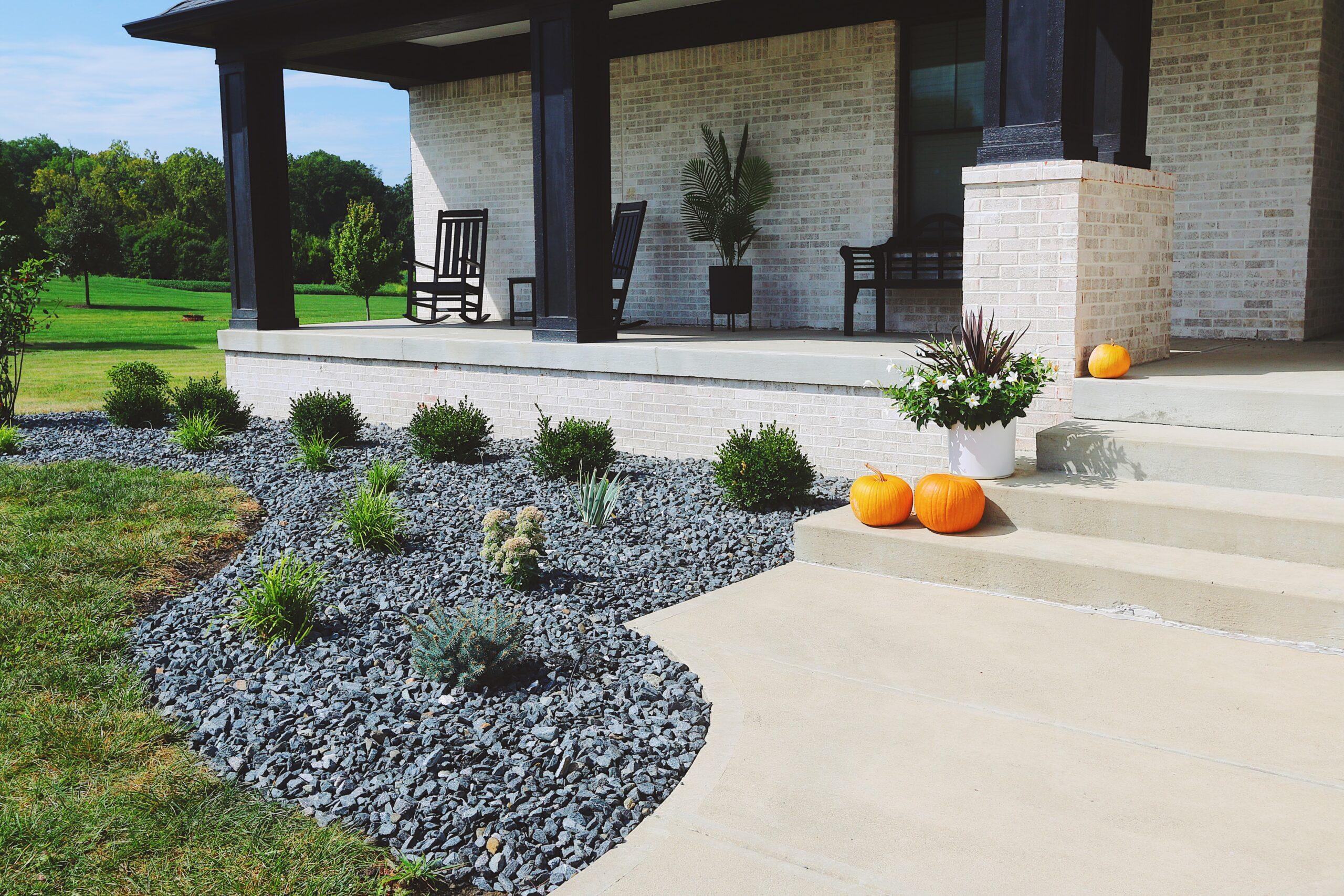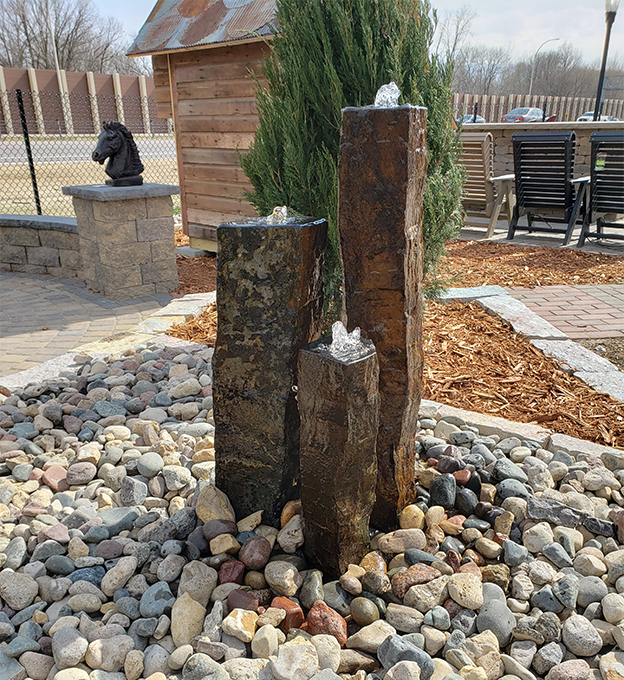Decorative lawn stones are an excellent addition to any landscape design. Not only do they add a visual appeal, but they also serve practical purposes, such as erosion control and weed prevention. In my own experience, transforming my garden with decorative stones was one of the most rewarding DIY projects I undertook. Allow me to take you through everything I learned along the way.
Table of Contents
- What Are Decorative Lawn Stones?
- Benefits of Decorative Lawn Stones
- Types of Decorative Lawn Stones
- How to Install Decorative Lawn Stones
- Maintenance of Decorative Lawn Stones
- Cost of Decorative Lawn Stones
- Frequently Asked Questions
What Are Decorative Lawn Stones?
Decorative lawn stones, also known as landscape rocks, are various types of stone used in gardens and landscaping to enhance aesthetic appeal and functionality. These stones can vary significantly in color, size, and shape, allowing for a wide range of design possibilities. From pathways and borders to garden features, decorative lawn stones provide both beauty and utility.
Benefits of Decorative Lawn Stones
1. Aesthetic Appeal
The first and foremost benefit is the aesthetic appeal. Decorative stones can elevate the look of your garden, offering a clean and organized appearance.
2. Low Maintenance
Unlike traditional landscaping plants that require regular watering, pruning, and fertilization, decorative stones require minimal maintenance. Once properly installed, they are relatively hassle-free.

3. Erosion Control
Using decorative stones can help prevent soil erosion. They provide a barrier that reduces water runoff, which can lead to soil loss.
4. Versatility
Decorative lawn stones can be used in various applications, including pathways, borders, rock gardens, and even for drainage solutions.
.jpg)
5. Environmentally Friendly
Stones are often sourced locally, making them an environmentally friendly option compared to synthetic landscaping materials.
6. Weed Control
When used correctly, decorative stones can significantly reduce weed growth in gardens and flower beds.

Notes on Benefits
- Decide on the function of the stones: decoration, drainage, or both.
- Consider the local climate when selecting stone varieties; some may withstand weather conditions better than others.
Types of Decorative Lawn Stones

Understanding the types of decorative stones available can help you make an informed decision.
1. River Rock
River rocks are smooth, rounded stones that come in various sizes. They are often used for dry river beds, pathways, and decorative borders.

2. Lava Rock
Lava rock has a porous texture and is lightweight. It is a popular choice for garden beds, offering excellent drainage while adding a unique texture.
3. Pea Gravel
Pea gravel consists of small, rounded stones that are easy to walk on. They make for great pathways and can also be used to fill in gaps between pavers.

4. Flagstone
Flagstone is flat, which makes it perfect for patio areas and walkways. It can be set in sand or gravel for stability.
5. Crushed Stone
Crushed stone is a versatile option that can be used for both functional and decorative purposes, often found in driveways and pathways.

Types Comparison Table
| Type | Texture | Best For | Cost |
|---|---|---|---|
| River Rock | Smooth | Pathways, Borders | $$ |
| Lava Rock | Poreous | Garden Beds | $$ |
| Pea Gravel | Rounded | Pathways, Play Areas | $ |
| Flagstone | Flat | Patios, Walkways | $$$ |
| Crushed Stone | Rough | Driveways, Paths | $ |
How to Install Decorative Lawn Stones
Installing decorative lawn stones can be a DIY project or something you hire professionals to do. Here’s a step-by-step guide to help you through the process:
Step 1: Plan Your Design
Before starting any project, sketch out your landscape design. Consider the color schemes, shapes, and sizes of stones.
Step 2: Prepare the Area
Clear the area of any debris, grass, or weeds. If you are creating a path, outline the area using stakes and string.
Step 3: Lay a Base
If you’re using larger stones like flagstone, consider laying them on a base of sand or gravel to ensure stability and ease of placement.
Step 4: Place the Stones
Start placing the stones according to your design. Ensure there are no gaps between them, and try to create a natural flow where possible.
Step 5: Fill in the Gaps
Once your stones are in place, fill in the gaps with smaller stones, gravel, or mulch to create a unified look and prevent weed growth.
Step 6: Compact and Level
Use a tamper to compact the stones and ensure everything is level. Watering the stones can help settle them in place.
Maintenance of Decorative Lawn Stones
While decorative stones require minimal maintenance, they still need some occasional care to look their best:
1. Regular Cleaning
Occasionally, dust and debris can accumulate on the stones. Use a broom or leaf blower to keep them clean.
2. Weeding
Even though stones can help prevent weeds, some may still pop up. Pull them out by hand or use a hoe to keep your stones looking sharp.
3. Replenish Stones
Over time, stones may shift or become buried under dirt. Regularly check and replenish as necessary to maintain the desired look.
Cost of Decorative Lawn Stones
The cost of decorative lawn stones can vary widely based on factors like type, size, and your location. Below is a rough guide to help you budget:
| Type of Stone | Average Cost per Ton |
|---|---|
| River Rock | $100 – $300 |
| Lava Rock | $150 – $400 |
| Pea Gravel | $50 – $150 |
| Flagstone | $200 – $600 |
| Crushed Stone | $50 – $200 |
Remember to account for the cost of delivery and installation if you choose to hire professionals. DIY can save you money, but always weigh the pros and cons before deciding.
Frequently Asked Questions
1. How do I choose the right decorative stone for my landscape?
Consider your landscape design, the function needed (pathway, drainage, etc.), and personal aesthetic preferences. Also, think about the maintenance each type will require.
2. Can decorative stones be used for drainage purposes?
Yes! Many types of decorative stones are excellent for drainage solutions, particularly crushed stone and river rock.
3. Are decorative lawn stones environmentally friendly?
Yes, many decorative stones are sourced locally and do not require additional resources for maintenance, making them a great eco-friendly option for landscaping.
4. How do I stop weeds from growing through decorative stones?
Using landscape fabric underneath the stones can prevent weeds from growing through. Occasional weeding will still be necessary, however.
5. How do I clean decorative stones?
You can use a broom to sweep off dirt and debris. For tough stains, consider using a pressure washer on low settings.
Conclusion
Decorative lawn stones can transform your landscape into a captivating outdoor oasis. Whether you choose river rocks, lava rock, or pea gravel, the options are endless. Embrace the low maintenance and aesthetic appeal these stones offer. It’s a rewarding investment that will enhance the beauty of your outdoor spaces for years to come!